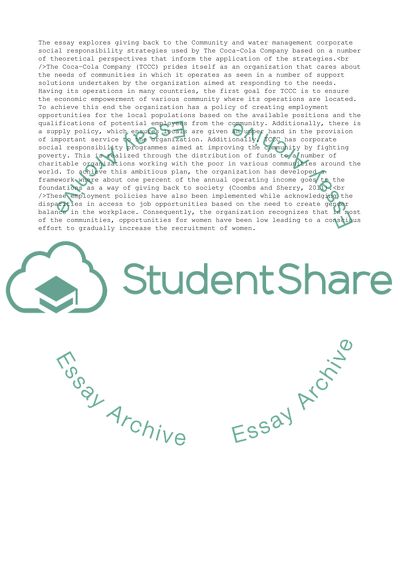Cite this document
(Corporate Social Responsibility Strategies of The Coca-Cola Company Essay Example | Topics and Well Written Essays - 1500 words, n.d.)
Corporate Social Responsibility Strategies of The Coca-Cola Company Essay Example | Topics and Well Written Essays - 1500 words. https://studentshare.org/business/1830974-corporate-governance-social-responsibility
Corporate Social Responsibility Strategies of The Coca-Cola Company Essay Example | Topics and Well Written Essays - 1500 words. https://studentshare.org/business/1830974-corporate-governance-social-responsibility
(Corporate Social Responsibility Strategies of The Coca-Cola Company Essay Example | Topics and Well Written Essays - 1500 Words)
Corporate Social Responsibility Strategies of The Coca-Cola Company Essay Example | Topics and Well Written Essays - 1500 Words. https://studentshare.org/business/1830974-corporate-governance-social-responsibility.
Corporate Social Responsibility Strategies of The Coca-Cola Company Essay Example | Topics and Well Written Essays - 1500 Words. https://studentshare.org/business/1830974-corporate-governance-social-responsibility.
“Corporate Social Responsibility Strategies of The Coca-Cola Company Essay Example | Topics and Well Written Essays - 1500 Words”. https://studentshare.org/business/1830974-corporate-governance-social-responsibility.


